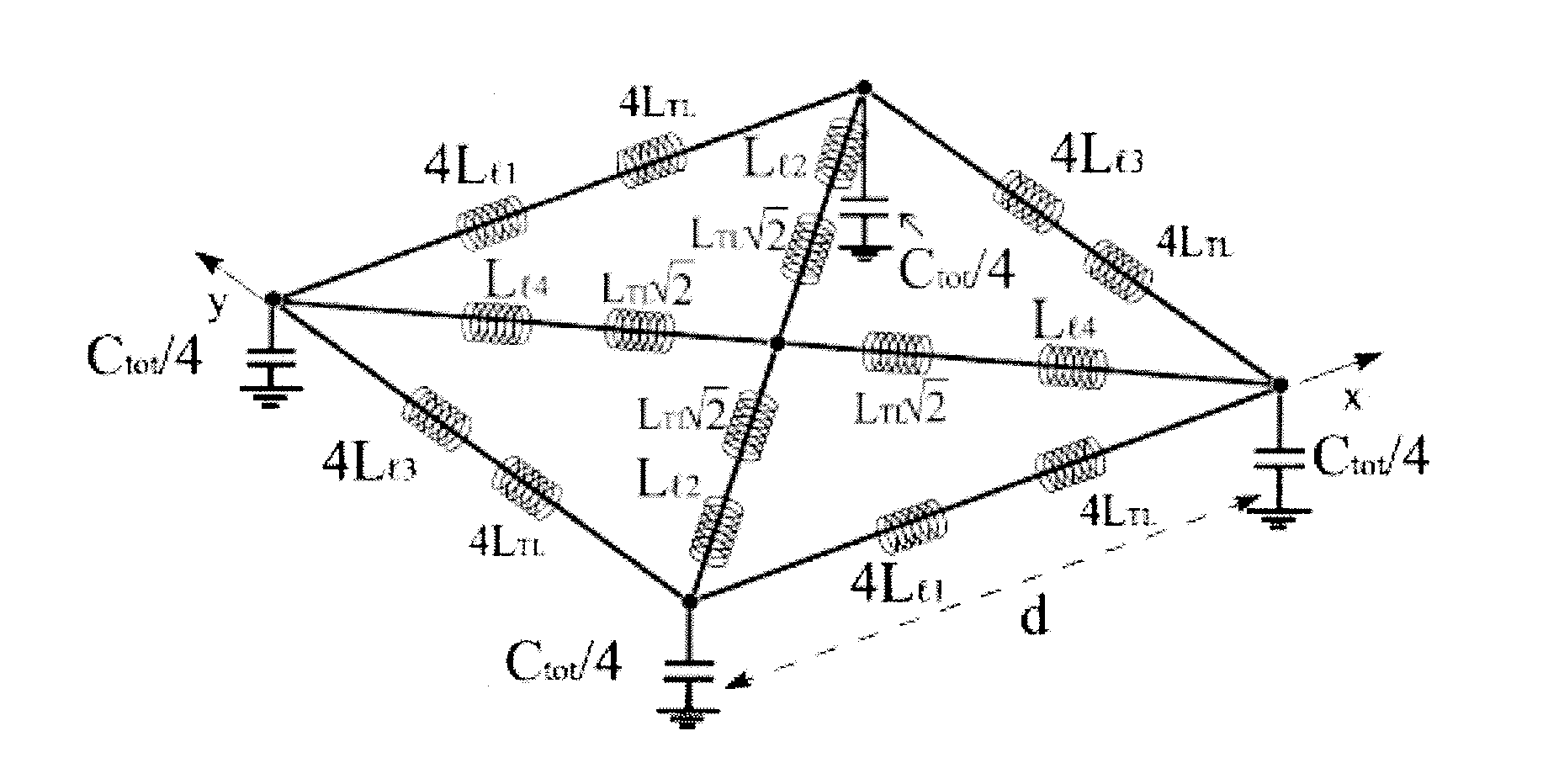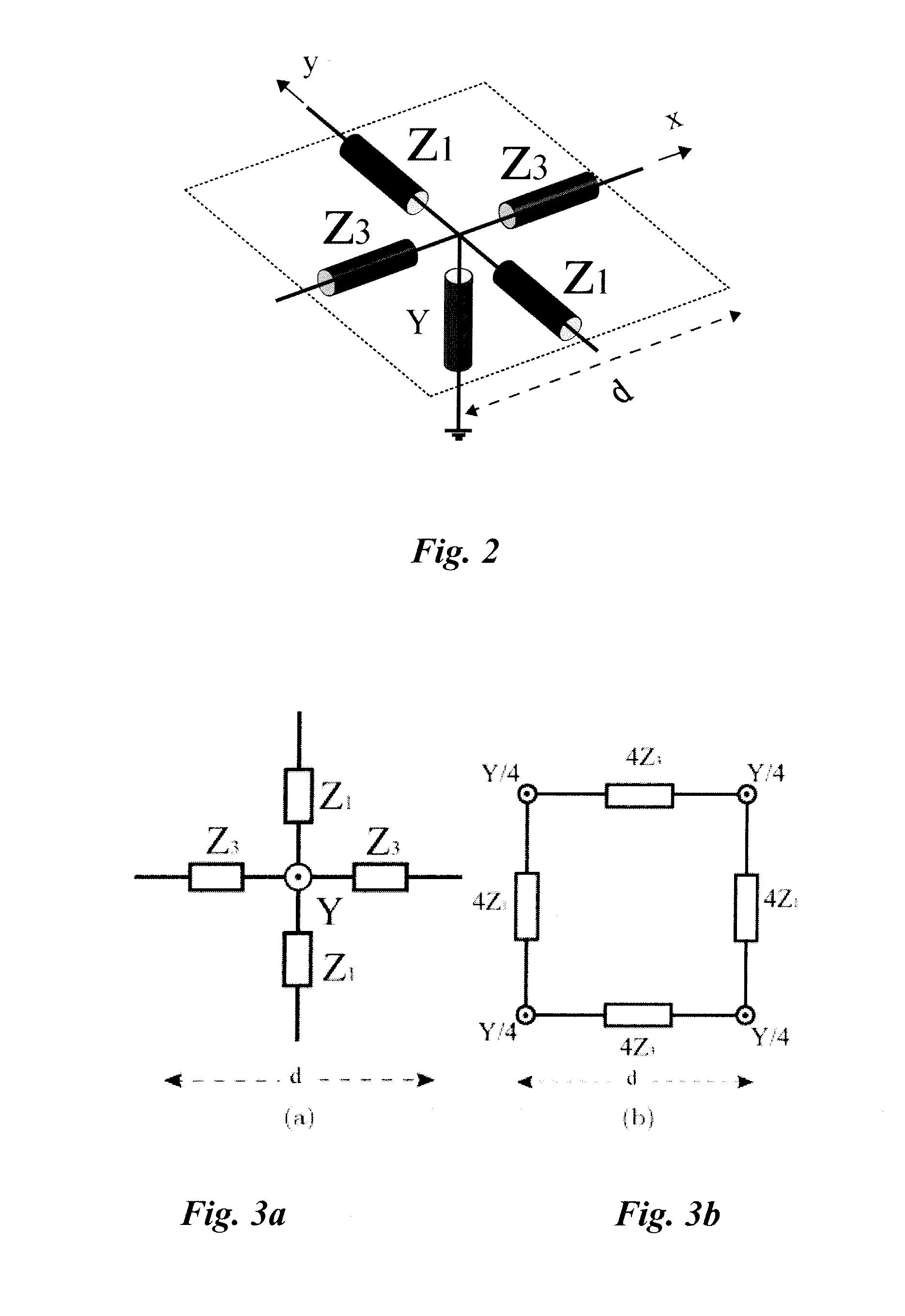Tensor Transmission-Line Metamaterials
a transmission line and metamaterial technology, applied in waveguides, instruments, lighting support devices, etc., to achieve the effect of low loss and broad operation bandwidth
- Summary
- Abstract
- Description
- Claims
- Application Information
AI Technical Summary
Benefits of technology
Problems solved by technology
Method used
Image
Examples
Embodiment Construction
[0035]Below are example techniques for designing TL metamaterials with arbitrary full tensors. The ability to create metamaterials with arbitrary material tensors is important to controlling and directing electromagnetic fields. The ability to realize tensor metamaterials such as those described herein allows for the development of novel devices derived through transformation optics [J. B. Pendry, D. Schurig, and D. R. Smith, “Controlling electromagnetic fields,”Science, vol. 312, pp. 1780-1782, June 2006]. In transformation optics, the path of electromagnetic waves is controlled through the spatial variation of a medium's effective material parameters. Specifically, the change in electromagnetic field from an initial spatial distribution to a desired spatial distribution is recorded as a coordinate transformation. This coordinate transformation can then be directly related to a change in the permittivity and permeability of the underlying medium. The electromagnetic devices designe...
PUM
 Login to View More
Login to View More Abstract
Description
Claims
Application Information
 Login to View More
Login to View More - R&D
- Intellectual Property
- Life Sciences
- Materials
- Tech Scout
- Unparalleled Data Quality
- Higher Quality Content
- 60% Fewer Hallucinations
Browse by: Latest US Patents, China's latest patents, Technical Efficacy Thesaurus, Application Domain, Technology Topic, Popular Technical Reports.
© 2025 PatSnap. All rights reserved.Legal|Privacy policy|Modern Slavery Act Transparency Statement|Sitemap|About US| Contact US: help@patsnap.com



